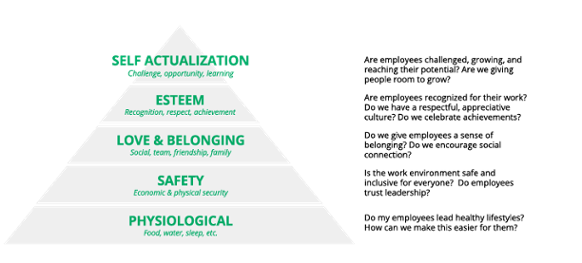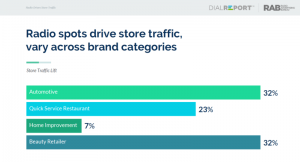Company culture and the employee experience are not easy to get right, so it can be tempting to address them in a reactive way:
- “Are employees asking for this?”
- “Is this a priority right now?”
- “Employees will tell us when something is wrong.”
- “We have an open door policy.”
Problems will inevitably come up, and they will already have become pain points by the time you can address them with a reactive approach. It’s worth prioritizing and analyzing culture now, before employees ask.
It’s important to proactively anticipate employee needs, and design an organizational culture that fosters mutual growth, trust, and esteem among all its members.
Why an open-door policy isn’t enough:
1. It’s hard for employees to speak up.
There are many pervasive attitudes from both managers and employees that prevent individuals from speaking up, even in high stakes situations.
In a survey of 1,025 managers and employees, respondents provided at least one example of silence costing the company an average of $ 7,500. Even though silence has shown to be costly, employees are still staying silent:
- 85 percent of employees recently failed to speak up.
- 90 percent of nurses hold back from speaking up to physicians, even when the patient’s safety is at risk.
- 93 percent of organizations are at risk of an accident due to employee silence.
2. The things employees need are hard to ask for.
For example, only 24 percent of employees are satisfied with management’s recognition of job performance, but asking for recognition, or expressing their dissatisfaction puts employees in a vulnerable position.
An employee would need to be confident saying they deserve more recognition, while also acknowledging their need to be appreciated. Given that many workplace cultures discourage employees from showing emotion at work, this conversation is unlikely to happen.
3. Employees do not always know what to ask for.
Employees may feel unhappy at work, but lack the context to bring up issues effectively. For example, they might be able to identify they feel unappreciated, but they likely won’t know that asking for a company recognition program would mean getting regular feedback, appreciation, and recognition.
4. It’s easier for employees to move on than create change.
93 percent of millennials say they left their employer the last time they changed roles. Changing jobs is easier than ever, and unhappy employees employees may find it easier to find greener grass than ask for change.
Proactively Building Organizational Culture
1. Design a workplace around employee needs
Since designing a great workplace is about creating a space for employees, Maslow’s Hierarchy of Needs is great place to start the design process.
The principle of Maslow’s Hierarchy is that the lower level needs must be satisfied before higher-order needs can influence behavior. For example, an employee who does not feel safe in the workplace will not be focused on learning new skills, building relationships, and pursuing opportunities.
Some of these levels might have come naturally for your company, and some might be challenge.
Here are some ideas to get started on each level:
Physiological: Taking care of employees’ physiological needs is one of the easiest needs to meet with clear return on investment. Workers who eat healthy meals and exercise on a regular basis have better job performance and lower absenteeism.
- Provide healthy snacks and lunches.
- Offer fitness subsidies or in office classes.
- Launch wellness campaigns for any issues affecting your employees specifically (sleep, stress, depression, exercise, unhealthy eating, drinking, inactivity, etc.).
- Be especially supportive during high stress periods.
Safety: Both physical and psychological safety are essential in the workplace and closely linked. Organizations who scored poorly in engagement averaged 62 percent more accidents. Building a company where employees feel safe means psychological safety, trust in management, and inclusive policies.
- Evaluate psychological safety in your workplace.
- Include collaboration and people skills in your hiring and training.
- Build trust in leadership with clear, open communication.
- Be aware of the seemingly insignificant policies that shape your workplace, for example conference room names, dress codes, and air conditioning.
- Support all of your employees by offering a mother’s room, prayer room, and flexible working arrangements.
Love and Belonging: To meet this need, companies must support relationships inside and outside of work:
- Make sure communication is effortless between employees with tools like Slack, Hipchat, Yammer, and Jostle.
- Donut is a Slack app that introduces people who don’t know each other well and encourages them to meet for coffee, lunch, or donuts. This is a great way to engage people who don’t enjoy group social settings.
- Normalize healthy work hours so employees can invest in relationships and communities outside of work.
- Organize company events like happy hours, cooking classes, sports leagues, spa days, team lunches, etc. Though every event won’t be exciting to everyone, ensure there are events for everyone.
Esteem: Making sure your employees feel recognized, respected, and celebrated is essential to driving performance.
Companies with recognition-rich culture have a 31 percent lower voluntary turnover rate. To build a recognition rich culture, recognition needs to go beyond top-down performance reviews and shout outs. Enable your team to recognize peers and celebrate achievements in real time throughout the day. It turns out that peers, not money, are the #1 influence on their colleagues, and the source of 20 percent of all employees going the extra mile.
Also, set up your promotion system in such a way that employees are not encouraged to compete against each other, but instead, reward employees who build up and support other employees.
Self actualization: People who achieve self-actualization are not only living and working at their highest potential, but also constantly growing and expanding their capabilities. This is your ideal, engaged employee.
With a solid foundation from the earlier steps, satisfying this step will be more about access to opportunities, removing barriers, and encouraging growth. Remember that all the other levels have to be fulfilled for self actualization to be achieved.
- Celebrate and recognize employee growth.
- Hire for and train leaders on emotional intelligence.
- Give employees access to training and personal development resources.
- Allow people to use their talents in the best way by allowing role flexibility and independence. Forcing strict job descriptions puts the self actualized employee in a box.
- Hire self actualized people by allowing applicants to write their own job description.
- Communicate and live your company values and mission to give employees a shared sense of purpose.

2. Proactively seek employee input
Getting feedback from employees is essential part of culture building, especially as you’re iterating and making gradual improvements. Waiting for employees to come to you will not give you the information you need.
Here are a few ideas for proactively getting employee feedback:
- Ongoing communication: Ask managers to get company feedback in one-to-one meetings
- Pulse check: Send employee surveys
- Detailed feedback: Focus groups or one on one chats about company culture
No matter the source, make sure you always respond positively to employee feedback. In a survey of 1,000 randomly selected Americans, 42 percent of those who spoke up at least once in the past year also decided not to speak up on other occasions, which is likely indicative of a difficult experience speaking up.
We’ve talked about how to stop silencing employees by mistake before, and this concept applies to culture building as well. Every time an employee does not feel heard, they are less likely to speak up again.
In Conclusion
Many organizational cultures operate in a way that makes employees unlikely to speak up about workplace issues. Furthermore, they are also unlikely to have the context or motivation to address company cultural concerns.
You can help alleviate this in your own organization by actively seeking employee input and keeping human needs at the forefront of your organizational design.
Business & Finance Articles on Business 2 Community(88)
Report Post






